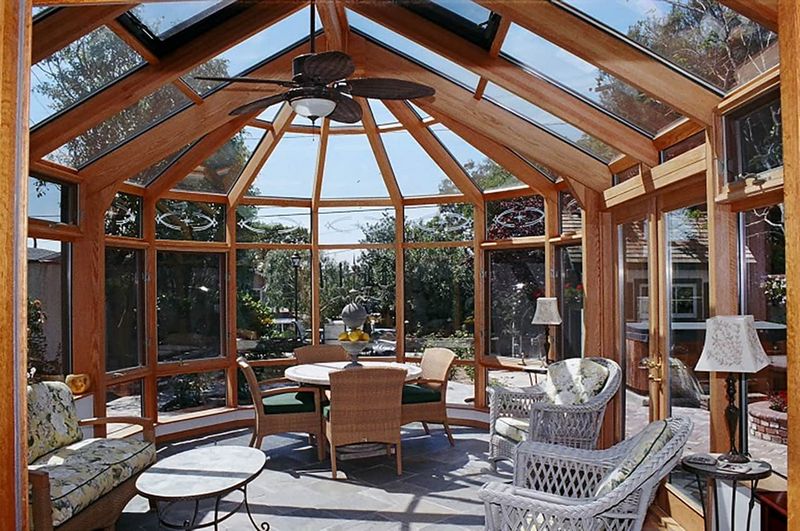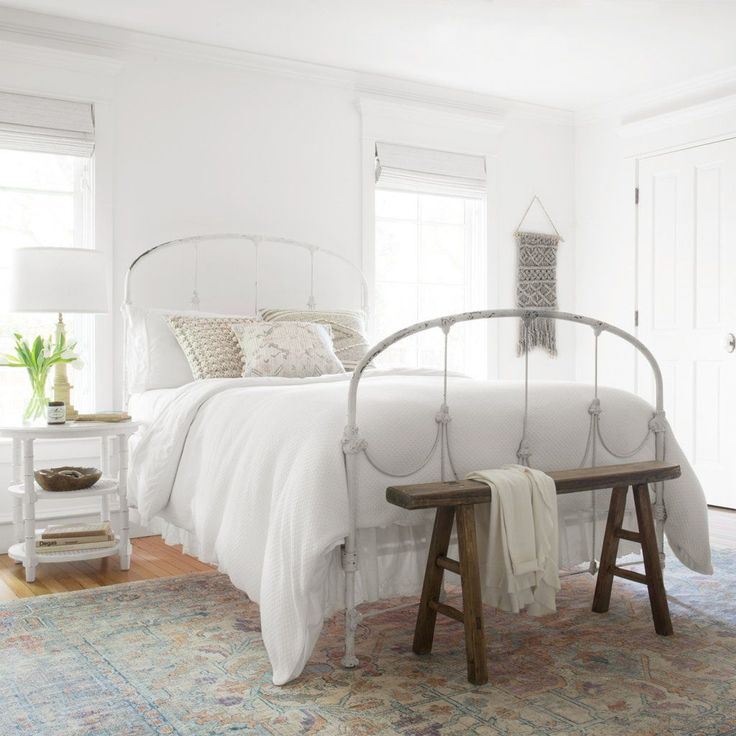
How to Heat and Cool a Sunroom
If you have a sunroom, you know how important it is to be able to enjoy it all year round. Whether you want to cool it down during the hot summer months or warm it up during the chilly winter season, finding the perfect balance of temperature can be a challenge. But fear not! We have essential tips and techniques to help you keep your sunroom comfortable no matter the weather.
Why heat and cool a sunroom?
Heating and cooling a sunroom is essential to create a comfortable and enjoyable space for year-round use. Whether you want to relax, work, or entertain, maintaining a pleasant temperature is key.
Here are a few reasons why heating and cooling are crucial:
- Comfort: A sunroom without proper heating and cooling can become too hot or too cold, making it difficult to enjoy the space. By regulating the temperature, you can ensure the comfort of everyone who uses the room.
- Functionality: An appropriately heated and cooled sunroom can be used throughout the year, regardless of the weather conditions. This extends the usable living space of your home and allows you to make the most of your sunroom investment.
- Energy Efficiency: By using efficient heating and cooling methods, you can minimize energy consumption and reduce utility bills. Insulation, ventilation, and energy-efficient systems help maintain a comfortable temperature without wasting energy.
- Preservation of Furniture and Plants: Extreme temperatures can damage furniture, plants, and other items in your sunroom. By properly heating and cooling the space, you can protect these belongings and ensure their longevity.
- Aesthetics: A sunroom that is too hot or cold may not be as visually appealing or inviting. By maintaining an optimal temperature, you can enhance the overall aesthetics of the space and create a welcoming environment.
Investing in quality heating and cooling systems for your sunroom is an investment in your comfort, functionality, and the long-term enjoyment of your space. With the right techniques and equipment, you can ensure that your sunroom is a cozy retreat no matter the season.
Assessing your sunroom
Are you looking for ways to cool or heat your sunroom? Follow these essential tips and techniques to effectively control the temperature and make your sunroom a comfortable space all year round.
Assess the insulation: Start by assessing the insulation of your sunroom. Proper insulation will help keep the heat out in summer and retain warmth in winter. Check for any gaps, cracks, or drafts, and seal them with caulk or weatherstripping.
Consider window treatments: Installing blinds, curtains, or shades can help control the amount of sunlight and heat that enters your sunroom. Choose light-colored and reflective options for summer to keep the space cool, and heavier and insulated options for winter to retain warmth.
Opt for energy-efficient windows: If your sunroom has outdated or inefficient windows, consider upgrading to energy-efficient ones. Look for windows with low-emissivity (Low-E) coatings and double or triple glazing to reduce heat transfer and save energy.
Install a ceiling fan: A ceiling fan can help circulate the air in your sunroom, making it feel cooler in summer and distributing warmth in winter. Choose a fan with reversible blades to switch between cooling and heating modes.
Explore HVAC options: If you want precise temperature control, consider installing a heating, ventilation, and air conditioning (HVAC) system in your sunroom. This will allow you to cool or heat the space based on your preferences, ensuring maximum comfort.
Use radiant heating: Another option to consider is radiant heating. This involves installing electric radiant panels or hydronic radiant floor heating to provide consistent warmth to your sunroom without any visible heating elements.
Monitor and adjust: Finally, regularly monitor the temperature in your sunroom and make adjustments as needed. Use a thermometer to keep track of the temperature and adjust your cooling or heating methods accordingly.
With these tips, you can effectively cool or heat your sunroom and create a comfortable space for relaxation and enjoyment all year round.
Considering insulation options
When it comes to heating and cooling your sunroom, insulation is a key factor to consider. Proper insulation can help to maintain a comfortable temperature year-round and reduce energy costs. There are several options available to insulate your sunroom and keep it cool in the summer and warm in the winter.
Here are some popular insulation options:
- Fiberglass insulation: This is one of the most common types of insulation used in sunrooms. Fiberglass insulation comes in rolls or batts and can be installed between studs, joists, and rafters. It is affordable, easy to install, and provides effective thermal insulation.
- Spray foam insulation: This type of insulation is applied as a liquid and expands to fill gaps and cracks. It provides excellent insulation and can help to create an air-tight seal. Spray foam insulation is ideal for hard-to-reach areas and can be used on walls, floors, and ceilings.
- Reflective insulation: Reflective insulation is made from layers of aluminum foil and air bubbles. It is designed to reflect radiant heat and is commonly used in sunrooms to keep them cool in the summer. Reflective insulation can be installed on the roof, walls, and windows.
When choosing insulation for your sunroom, consider factors such as cost, R-value, durability, and ease of installation. It’s recommended to consult with a professional to determine the best insulation option for your specific sunroom.
| Fiberglass insulation | Affordable, easy to install | May require protective clothing and masks during installation |
| Spray foam insulation | Excellent insulation, air-tight seal | More expensive, requires professional installation |
| Reflective insulation | Reflects radiant heat, keeps sunroom cool | May not provide as much insulation in cold climates |
By considering these insulation options, you can ensure that your sunroom remains comfortable and energy-efficient throughout the year. Whether you choose fiberglass, spray foam, or reflective insulation, proper insulation will make a significant difference in the temperature and energy costs of your sunroom.
Choosing the right heating system
When it comes to heating your sunroom, it is important to choose the right system to ensure comfort and efficiency. Here are some key factors to consider:
- Size of the sunroom: The size of your sunroom will determine the capacity of the heating system you will need. Measure the area of the room and consult with a professional to determine the appropriate heating capacity.
- Insulation: Check the insulation of your sunroom to ensure that it is properly insulated. Good insulation will help retain heat and improve energy efficiency.
- Heating options: There are several heating options available for sunrooms, including radiant floor heating, electric baseboard heaters, and ductless mini-split systems. Each option has its own advantages and disadvantages, so it’s important to consider your specific needs and preferences.
- Budget: Consider your budget when choosing a heating system for your sunroom. Some systems may be more expensive upfront but offer higher energy efficiency and long-term cost savings.
- Professional installation: It is recommended to have your heating system professionally installed to ensure proper functioning and safety.
By considering these factors and making an informed decision, you can choose the right heating system for your sunroom and enjoy a comfortable and cozy space all year round.
Selecting the best cooling method
When it comes to keeping your sunroom cool and comfortable during those hot summer months, it’s essential to choose the right cooling method. There are a few options to consider, depending on your needs and budget.
Fans: Fans are a popular and cost-effective way to cool down a sunroom. Ceiling fans can help circulate the air and create a cooling breeze. Portable fans can also be used to target specific areas or provide extra airflow.
Air conditioning: If you want to take your sunroom cooling to the next level, consider installing an air conditioning unit. This will provide a consistent and adjustable temperature, ensuring maximum comfort even on the hottest days. There are various types of air conditioning units available, including window units, split systems, and ductless mini-splits.
Blinds or shades: Don’t underestimate the power of shades or blinds when it comes to cooling your sunroom. By blocking out the sun’s rays, you can significantly reduce the amount of heat that enters the space. Consider installing shades that are designed to reflect sunlight and keep your sunroom cooler.
Ventilation: Proper ventilation is key to keeping your sunroom comfortable. Make sure your sunroom has adequate ventilation by installing windows that open and close easily. This will allow fresh air to flow in and hot air to escape.
Insulation: Insulating your sunroom can help regulate its temperature both in the summer and winter. By adding insulation to the walls, roof, and floor, you can prevent heat from entering during the summer months and keep warm air in during the winter months.
Summary: When it comes to keeping your sunroom cool, it’s essential to choose the right cooling method for your needs. Whether it’s fans, air conditioning, blinds, ventilation, or insulation, each option has its advantages. Consider your budget, the climate you live in, and your preferences to make the best choice for your sunroom.

Sizing your heating and cooling equipment
When it comes to heating and cooling your sunroom, it’s important to choose the right equipment size to ensure optimal comfort and energy efficiency. Here are some essential tips and techniques for properly sizing your heating and cooling equipment:
- Calculate the square footage: Determine the total square footage of your sunroom space. This will help you determine the capacity of heating and cooling equipment needed.
- Consider insulation: Take into account the level of insulation your sunroom has. Well-insulated sunrooms will require less heating and cooling capacity compared to sunrooms with poor insulation.
- Assess sun exposure: Consider the sun exposure your sunroom receives throughout the day. Sunrooms that are heavily exposed to the sun may require additional cooling capacity.
- Factor in windows and ventilation: Take into account the number and size of windows in your sunroom, as well as the ventilation options available. These factors can affect the heat gain and loss in the space.
- Consult with a professional: It’s always a good idea to consult with a professional HVAC technician or contractor who specializes in sunroom heating and cooling. They can accurately assess your needs and recommend the right equipment size.
By properly sizing your heating and cooling equipment for your sunroom, you can ensure a comfortable and energy-efficient space all year round. Don’t hesitate to seek professional guidance to make the best decision for your needs.
Ensuring proper air circulation
Proper air circulation is essential for maintaining a comfortable temperature in your sunroom, both during the hot summer months and the cold winter season. By implementing the right techniques, you can effectively heat and cool your sunroom to create a space that you can enjoy all year round.
Here are some tips on how to ensure proper air circulation in your sunroom:
- Install ceiling fans: Ceiling fans can help distribute air evenly throughout the room. In the summer, set your fans to rotate counterclockwise to create a cooling breeze, and in the winter, set them to rotate clockwise to push warm air down.
- Add floor fans: In addition to ceiling fans, consider adding portable floor fans to enhance air movement in your sunroom. Place the fans strategically to target areas that need extra cooling or heating.
- Open windows and doors: On mild days, open windows and doors to allow natural airflow. This will help lower the temperature in the summer and bring in fresh air in the winter.
- Use window coverings: Install blinds, shades, or curtains on your sunroom windows to control the amount of heat and light entering the space. This will help regulate the temperature and prevent excessive heat gain during the summer.
- Consider a ductless mini-split system: For more efficient heating and cooling, you may want to install a ductless mini-split system in your sunroom. This will provide independent temperature control and ensure that the air is evenly distributed throughout the space.
In conclusion, by following these tips and techniques, you can achieve proper air circulation and maintain a comfortable temperature in your sunroom, allowing you to enjoy the space regardless of the season.
Installing Energy-Efficient Windows
When it comes to heating and cooling your sunroom, one of the most important factors to consider is the windows. Upgrading to energy-efficient windows can significantly improve the comfort and energy efficiency of your sunroom.
Here are some reasons why installing energy-efficient windows is a great investment for your sunroom:
- Reduced heat loss: Energy-efficient windows are designed to prevent heat transfer, keeping the warm air inside during the winter months. This means you can enjoy a cozy and comfortable sunroom even on the coldest days.
- Improved insulation: Energy-efficient windows have advanced insulation properties, reducing drafts and minimizing the need for additional heating or cooling. This can lead to substantial savings on your energy bills.
- UV protection: The sun’s UV rays can cause fading and damage to your furniture, flooring, and other belongings. Energy-efficient windows are often equipped with special coatings that can block a significant amount of UV radiation, protecting your sunroom from sun damage.
- Enhanced durability: Energy-efficient windows are typically made with high-quality materials and construction methods. This makes them more durable and long-lasting, ensuring that your investment will continue to provide benefits for many years to come.
By installing energy-efficient windows in your sunroom, you can create a comfortable and energy-efficient space that allows you to enjoy the sunroom all year round. Whether you want to heat your sunroom in the winter or keep it cool in the summer, energy-efficient windows are a crucial component for achieving your desired temperature and energy savings.
Controlling temperature and humidity levels
When it comes to creating a comfortable and enjoyable sunroom environment, controlling the temperature and humidity levels is crucial. Whether you want to keep your sunroom cool in the summer or heat it up during the colder months, there are several essential tips and techniques to consider.
- Insulation: Proper insulation is key in maintaining a consistent temperature in your sunroom. Choosing high-quality insulation materials and sealing any gaps and cracks will help to prevent heat loss in the winter and keep cool air from escaping in the summer.
- Double-glazed windows: Double-glazed windows are highly effective in reducing heat transfer and insulating your sunroom. They consist of two glass panes with a layer of air or gas between them, providing insulation against both heat and cold.
- Window treatments: Installing blinds, shades, or curtains can help regulate the amount of sunlight and heat that enters your sunroom. Opt for light-colored or reflective window treatments to reflect heat away from the room and keep it cool.
- Ceiling fans: Installing ceiling fans in your sunroom can help circulate air and provide a cooling effect. During the summer months, run the fans counterclockwise to create a breeze to keep you cool.
- Heating options: In colder months, you may want to consider adding heating options to your sunroom. Electric heaters, radiant floor heating systems, or even a fireplace can provide warmth and make your sunroom cozy and inviting.
Moreover, it is important to control the humidity levels in your sunroom. Excessive humidity can lead to mold growth and cause discomfort. Consider adding a dehumidifier to maintain optimal humidity levels and ensure a pleasant sunroom experience.
By following these essential tips and techniques for controlling temperature and humidity levels in your sunroom, you can create a comfortable and enjoyable space that can be enjoyed year-round.
Integrating smart technology
Are you looking for innovative ways to heat and cool your sunroom? Look no further! With the integration of smart technology, you can achieve optimal comfort while also saving energy.
Here are some ways on how to heat and cool your sunroom using smart technology:
- Smart thermostats: By installing a smart thermostat, you can easily control the temperature of your sunroom from anywhere using your smartphone. Set schedules, adjust settings, and monitor energy usage effortlessly.
- Zoned heating and cooling: With smart technology, you can divide your sunroom into separate zones and control the temperature individually. This allows you to heat or cool specific areas according to your preferences.
- Sensor-based automation: By incorporating sensors into your sunroom, smart technology can detect changes in temperature, humidity, and sunlight levels. This enables your heating and cooling systems to automatically adjust, ensuring optimal comfort throughout the day.
- Voice control: Take your sunroom’s comfort to the next level with voice-controlled smart devices. Simply speak commands to adjust the temperature or activate your heating and cooling systems without lifting a finger.
Integrating smart technology into your sunroom not only provides convenience and comfort but also helps you save on energy costs. So why wait? Upgrade your sunroom with these smart solutions and enjoy the perfect temperature all year round!
Maintenance and troubleshooting tips
Proper maintenance of your sunroom is essential for proper heat distribution and cooling. Here are some tips on how to maintain and troubleshoot your sunroom:
- Clean the windows: Dirty windows can block the heat from entering or escaping your sunroom. Regularly clean the windows to ensure maximum heat transfer.
- Insulate the walls and ceiling: Proper insulation helps to keep the sunroom warm in the winter and cool in the summer. Inspect the insulation for any damage and replace it if necessary.
- Check the vents and fans: Make sure the vents and fans are free from dust and debris. Clean them regularly to ensure proper airflow and cooling.
- Adjust the blinds or shades: The blinds or shades in your sunroom can help regulate the temperature. Adjust them accordingly to block the sun’s heat during hot days or let it in during cold days.
- Inspect the air conditioning unit: If your sunroom is equipped with an air conditioning unit, regularly inspect it for any issues. Clean or replace the filters, check the condenser unit, and ensure the proper functioning of the system.
In case you encounter any problems with heating or cooling your sunroom, consider contacting a professional for assistance. They can provide expert advice and help resolve any issues you may be facing.
Remember, proper maintenance and troubleshooting techniques are essential for maintaining a comfortable temperature in your sunroom throughout the year.
Budgeting for heating and cooling costs
When it comes to heating and cooling your sunroom, it’s important to budget wisely to ensure optimal comfort without breaking the bank. Here are some essential tips to help you budget for your sunroom’s heating and cooling costs:
- Invest in energy-efficient windows: Windows are often the main source of heat gain and loss in a sunroom. Opt for energy-efficient windows with Low-E glass to reduce heat transfer and keep your energy bills in check.
- Insulate your sunroom: Proper insulation is crucial for maintaining a comfortable temperature in your sunroom. Insulate the walls, windows, and ceiling to minimize heat loss during winter and keep the space cool during summer.
- Consider a heat pump: A heat pump is an energy-efficient option for heating and cooling your sunroom. It uses electricity to transfer heat from the air or ground, providing efficient heating in winter and cooling in summer.
- Invest in a programmable thermostat: A programmable thermostat allows you to set specific temperature preferences for different times of the day. This helps optimize energy usage and reduce heating and cooling costs when the sunroom is not in use.
- Use ceiling fans: Ceiling fans can help circulate air in your sunroom, making it feel cooler during hot summer days and reducing the need for excessive air conditioning.
By following these tips and budgeting wisely, you can efficiently heat and cool your sunroom without breaking your budget. Remember to regularly evaluate your energy usage and make adjustments as necessary to ensure optimal comfort and cost savings.
Hiring professional help
If you are unsure about how to heat and cool your sunroom, it may be beneficial to hire a professional. A professional technician can assess your specific needs and provide expert advice on the best heating and cooling options for your sunroom. They will have the knowledge and experience to properly install and maintain the necessary equipment.
When hiring a professional, it is important to do your research and find a reputable company. Look for technicians who are licensed and insured. You can ask for recommendations from friends or family, or look for reviews online.
During the consultation with the professional, be sure to ask questions and express any concerns you may have. They will be able to provide you with detailed information on the different heating and cooling systems available, as well as their costs and energy efficiency.
Once you have decided on the best heating and cooling solution for your sunroom, the professional technician will handle the installation process. They will ensure that all equipment is properly connected and functioning correctly.
In addition to installation, a professional technician can also provide maintenance services for your heating and cooling system. Regular maintenance is essential to keep your system running efficiently and to prevent any potential issues.
- Research reputable companies
- Ask for recommendations
- Ask questions and express concerns during the consultation
- Ensure proper installation
- Schedule regular maintenance
Hiring a professional to handle the heating and cooling of your sunroom can provide you with peace of mind and ensure that your sunroom is comfortable year-round.
Q&A:
Can I use a space heater to heat my sunroom?
Yes, you can use a space heater to heat your sunroom. However, it’s important to consider the size of your sunroom and the power output of the space heater to ensure it is capable of heating the space effectively.
What are the benefits of using a ductless mini-split system to heat and cool a sunroom?
There are several benefits to using a ductless mini-split system to heat and cool a sunroom. Firstly, it provides both heating and cooling capabilities, allowing you to maintain a comfortable temperature year-round. Additionally, it is energy-efficient, easy to install, and provides individual temperature control for maximum comfort.
How do I determine the appropriate size of air conditioner for my sunroom?
To determine the appropriate size of air conditioner for your sunroom, you should consider both the size of the room and the climate in your area. As a general rule, you will need about 20 BTUs per square foot of space. However, it’s always best to consult with a professional HVAC technician to ensure you choose the right size air conditioner for your specific needs.
Are there any alternative methods for heating a sunroom?
Yes, there are alternative methods for heating a sunroom. For example, you could use radiant floor heating, which involves installing electric heating cables or water-filled pipes beneath the floor. Another option is to use a pellet stove, which burns compressed wood pellets to produce heat. Both of these methods can provide effective and efficient heating for your sunroom.
Can I install a ceiling fan in my sunroom to help with cooling?
Yes, installing a ceiling fan in your sunroom can help with cooling. A ceiling fan can improve air circulation and create a breeze, making the space feel cooler. However, it’s important to note that a ceiling fan does not actually lower the temperature of the room, so it should be used in conjunction with an air conditioner or other cooling method for the best results.
What are some essential tips for heating and cooling a sunroom?
There are several essential tips for heating and cooling a sunroom. Firstly, you should consider insulation to prevent heat loss or gain. Secondly, installing a ceiling fan can help circulate the air and maintain a comfortable temperature. Thirdly, using window treatments like blinds or curtains can help regulate sunlight and temperature. Additionally, you can also consider installing a portable heater or air conditioner for added comfort.
How can I insulate my sunroom to improve heating and cooling?
Insulating your sunroom is important for improving heating and cooling efficiency. One way to insulate is by adding weatherstripping to seal any gaps or cracks in windows or doors. You can also enhance insulation by using double-pane or insulated glass for windows. Additionally, installing insulation in the walls and ceiling of the sunroom can greatly improve its energy efficiency. These insulation measures can help prevent heat loss in the cold months and keep the room cooler in the hot months.







